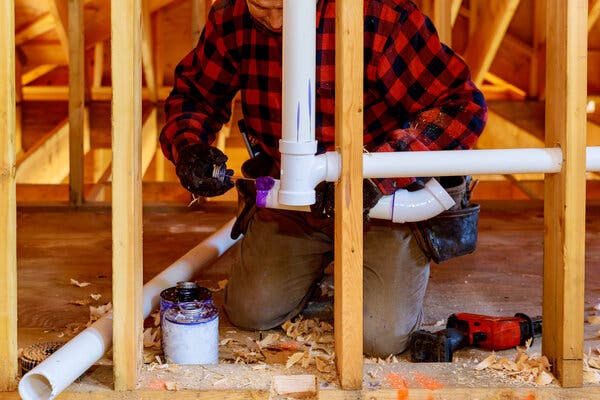
To Save More Water, American Homes Need Smaller Pipes
Many high-performing, water-saving fixtures and appliances are designed like straws, supplying only enough water to satisfy one’s thirst. But the pipes that bring that water into Americans’ homes are sized more like fire hoses.
Oversize plumbing pipes move water inefficiently, wasting money and increasing the risk of waterborne diseases. And water efficiency is especially important as climate change makes droughts more frequent and severe. Efforts to right-size plumbing pipes to match the intake of water-saving products are slowly gaining traction, but homeowners and designers of multiunit properties who want to use these more sustainable pipes need to demand them during the project design phase.
When the current method for sizing pipes to transport hot and cold water throughout the home was created in the 1940s, it was under the assumption that every fixture had to be able to support a line of people for the bathroom, like at a sports stadium at halftime, according to Christoph Lohr, a mechanical engineer specializing in plumbing systems and the vice president of technical services and research for the International Association of Plumbing and Mechanical Officials, a trade organization.
Image
Over the years, more homeowners have chosen water-saving devices, including those bearing the Environmental Protection Agency’s WaterSense label, which debuted in 2006. Credit...Ana Larkin/500px, via Getty Images
But even during a party at home, there won’t be a line for the kitchen sink, the shower, the bathtub, the laundry machine, the dishwasher and the toilets, with people using them over and over. In other words, most plumbing fixtures in the United States are designed to accommodate total flow rates far higher than they will realistically encounter.
Over the years, more homeowners have chosen water-saving devices, including those bearing the Environmental Protection Agency’s WaterSense label, which debuted in 2006. Products featuring the WaterSense label must be at least 20 percent more water-efficient than standard models, while performing as well or better. Low-flow toilets were among the first products to receive the WaterSense label, and are now commonplace. The current federal standard for toilets is 1.6 gallons per flush, compared with 5 gallons per flush before 1992.
Thank you for your patience while we verify access. If you are in Reader mode please exit and log into your Times account, or subscribe for all of The Times.
Thank you for your patience while we verify access.
Already a subscriber? Log in.
Want all of The Times? Subscribe.
……Read full article on The New York Times-Real Estate
Home
Comments
Leave a comment in Nestia App